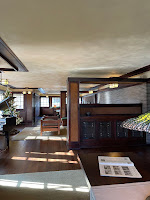“[Harding was] a man who was far from perfect, a mortal sinner like the rest of us, but someone who began life in modesty in small-town America, worked hard, and achieved the American dream, then made it possible, during very trying times, for his countrymen to achieve theirs” (189).
The Book
Warren G. Harding is often ranked as one of the worst presidents, alongside James Buchanan and Andrew Johnson, and his accomplishments are often overlooked due to a handful of scandals. In The Jazz Age President: Defending Warren G. Harding, author Ryan S. Walters focuses on the context surrounding, the actions of, and the impact of the Harding presidency, to help readers come to their own conclusions.
The years leading up to the 1920 election were tumultuous ones: World War I, the Spanish Flu, socialist and anarchist led terrorism, racial violence, economic depression, and labor unrest. Harding was nominated on the tenth ballot at the Republican Convention, after he reluctantly entered the race. And, despite only being president for 882 days, his administration accomplished a lot:
- For the first time the vice president was involved in all cabinet meetings.
- An economic boom resulted from a reduction in government spending and tax rates.
- Humanitarian aid was provided to the Soviet Union during a famine.
- Government relations with Latin America were repaired.
- The Washington Disarmament (or Naval) Conference sought to prevent another arms race, like the that led to World War I.
- The segregation of the federal government, under President Wilson, was reversed and Harding called for the civil rights of blacks in a speech delivered in Alabama.
Yet, despite all of this, the Harding Presidency is mainly
remembered for three scandals: the leader of the Veterans Bureau pocketed money
for himself from funds meant to support veterans; the Justice Department was
riddled with political corruption; and the Secretary of the Interior accepted
bribes for oil reserves (Teapot Dome). In the first two, Harding acted immediately, demanding resignations and threating arrests. The details of
Teapot Dome didn’t emerge until after his early death—in 1923, preventing him
from taking swift action or defending himself. Walters points out that Harding
probably wasn’t a great president, but what he was able to accomplish in such a
short time point to being a good president.
Under 200 pages, The Jazz Age President isn’t your typical academic biography of a president. It is a quick and easy read, with Harding not taking center stage until the third chapter. The narrative relies about equally on Harding’s own words and the words of his critics (both in the past and today). In some instances, the reader will discover current scholars who are reconsidering the accepted beliefs about the Harding presidency. For the most part, I appreciated the tighter focus, except for the chapter on the three scandals. I found myself wanting a bit more detail to help me form my own conclusions. In his defense of Harding, Walters wonders why history has judged Harding so harshly, when other presidents have also faced scandals. It’s a good question and one that his book helps to address.
The Place
The Warren G. Harding Presidential Sites consist of the Harding Home, Harding Memorial, and Warren G. Harding Presidential Library and Museum, all located in Marion, Ohio. Opened in May 2021, it is one of the newer presidential museums; the restored Home also reopened to the public at the same time. Just like The Jazz Age President, these sites aim to help visitors have a better understanding of Harding. On the Home tour, you get a peak into the lives of Harding and his wife, including the fact that waffles were Harding’s favorite meal (he liked to top his with chipped beef and gravy). About half of the small Museum focuses on Harding’s presidency and impact, with the other half focusing on his early life, newspaper career, and time in the Senate. A short drive from the Home and Museum is the Memorial. While an impressive memorial to the former president, we didn’t stay long because it was a frigid January day. The Home and Library and Museum are part of the same complex and have seasonal hours. From March through November they are open Wednesday through Sunday and from December through February they are open Thursday through Sunday; with varying hours for the days of the week. There is an admission fee and tours are offered—on the hour—of the Home. Visitors are encouraged to purchase tickets online. The Memorial is open year-round from dawn to dusk and free.












